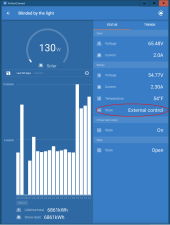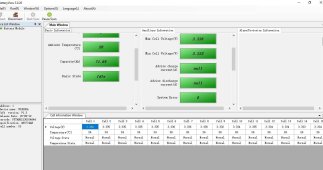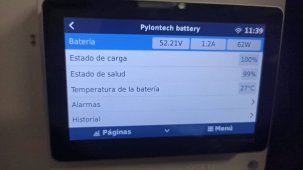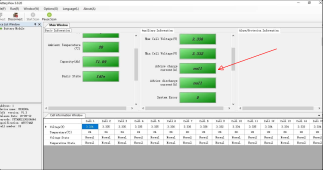AgroVenturesPeru
New Member
- Joined
- Sep 19, 2020
- Messages
- 411
I've been dealing with some LiFePO4 battery problems for months now. The first twelve months following initial off-grid system installation everything was fine. Not a single problem. Then somewhere around the 12-13 month mark I noticed the battery bank would consistently top out at 88% according to the Touch50. Long story short, over the course of the past few months the battery bank would charge less and less. Every once in a while (seemingly randomly) the system would decide to charge the batteries up significantly higher than all other days. But still the downward trend continued.
Oh yeah, I didn't change anything prior to this problem starting.
Out of the bank of four batteries, one is now in the shop of the distributor being looked at. It was generating lots of low temperature alarms even when ambient temps were 80 degrees or 25C. The occasional internal failure alarm as well.
Well sent that unit in and down to three now, so reconfigured the capacity from 296ah down to 222ah using VEconfigure.
Then the next master battery generated an internal failure alarm.
We're operating with only three batteries now in a narrow band of about 20% to 40% charge and the recharge capacity still seems to be going down. They won't charge higher than about 40% now. It's not the solar or mppt, because when we run an appliance like an electric oven or water heater during the day, the MPPT will show going from an output of somewhere around 200w to 3000-4000w once the appliance is turned on.
Today I just decided to try running with only two batteries to see if that makes a difference. I know it's a long shot, but I want to see if maybe the bottom two batteries are free of errors. No one has any answers. At this rate it looks like we'll be in the dark in a couple months.
Here's some info about the batteries in case anyone's curious. They are the Pylontech US3000
Oh yeah, I didn't change anything prior to this problem starting.
Out of the bank of four batteries, one is now in the shop of the distributor being looked at. It was generating lots of low temperature alarms even when ambient temps were 80 degrees or 25C. The occasional internal failure alarm as well.
Well sent that unit in and down to three now, so reconfigured the capacity from 296ah down to 222ah using VEconfigure.
Then the next master battery generated an internal failure alarm.
We're operating with only three batteries now in a narrow band of about 20% to 40% charge and the recharge capacity still seems to be going down. They won't charge higher than about 40% now. It's not the solar or mppt, because when we run an appliance like an electric oven or water heater during the day, the MPPT will show going from an output of somewhere around 200w to 3000-4000w once the appliance is turned on.
Today I just decided to try running with only two batteries to see if that makes a difference. I know it's a long shot, but I want to see if maybe the bottom two batteries are free of errors. No one has any answers. At this rate it looks like we'll be in the dark in a couple months.
Here's some info about the batteries in case anyone's curious. They are the Pylontech US3000
Last edited:








